When it comes to Huzhou, perhaps its name may not immediately resonate with everyone upon first hearing it. However, once Nanxun is mentioned, it is practically a household name that everyone recognizes.
Some say that Huzhou is a place where the scenery is more famous than the city itself. This is not entirely true.
Huzhou, a dazzling pearl nestled at the intersection of Zhejiang, Jiangsu, and Anhui provinces, is like a cradle of culture. It has nurtured the profound cultural heritage of silk, brushes, porcelain, tea, and wine in China. This place is a land of abundance, known for its grains, silkworm cocoons, freshwater fish, and moso bamboo. Moreover, it is the birthplace of the modern Huzhou merchant spirit and a source of inspiration for Chinese painters and calligraphers. Talented artists have left countless treasured works here…
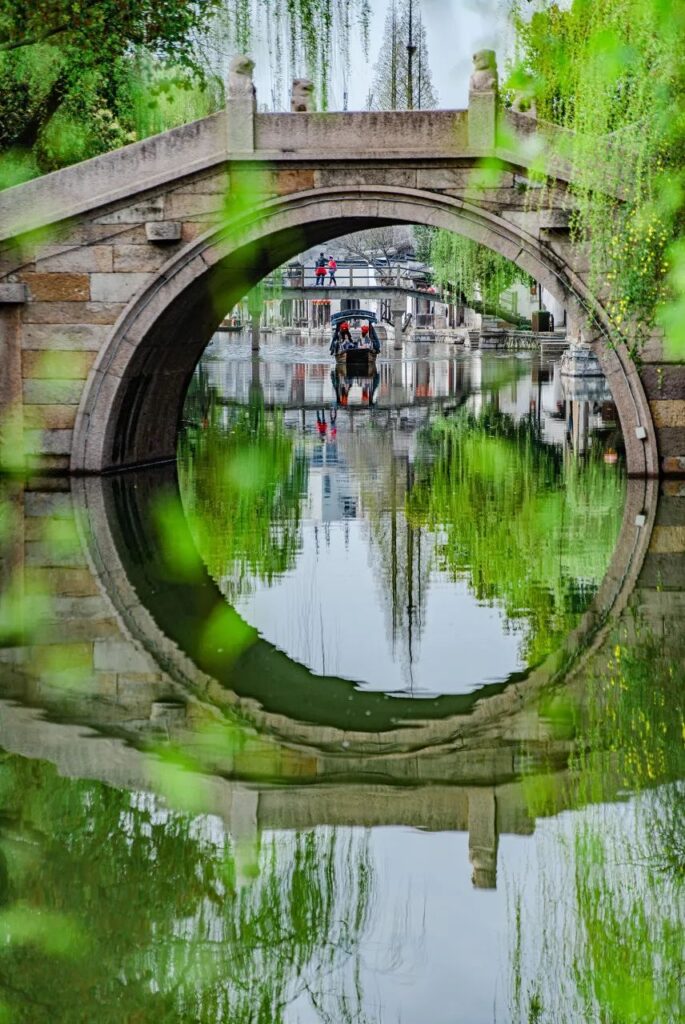
Huzhou, a city also known as “the city with the best quality of life in Zhejiang.”
Mr. Bai Yansong once commented, “If we have not yet deeply understood Huzhou, then we have not truly appreciated the essence of life.”

Throughout history, Huzhou has been elegantly referred to as “Gucheng.” The character “Gu” refers to the vibrant green vegetables swaying in the wind by the lakeside. It was also called “Wucheng,” a captivating place sharing the same name as fine wine.
Today, the two characters “Huzhou” seem to carry a hint of the boldness and chivalry of the jianghu (martial arts world).
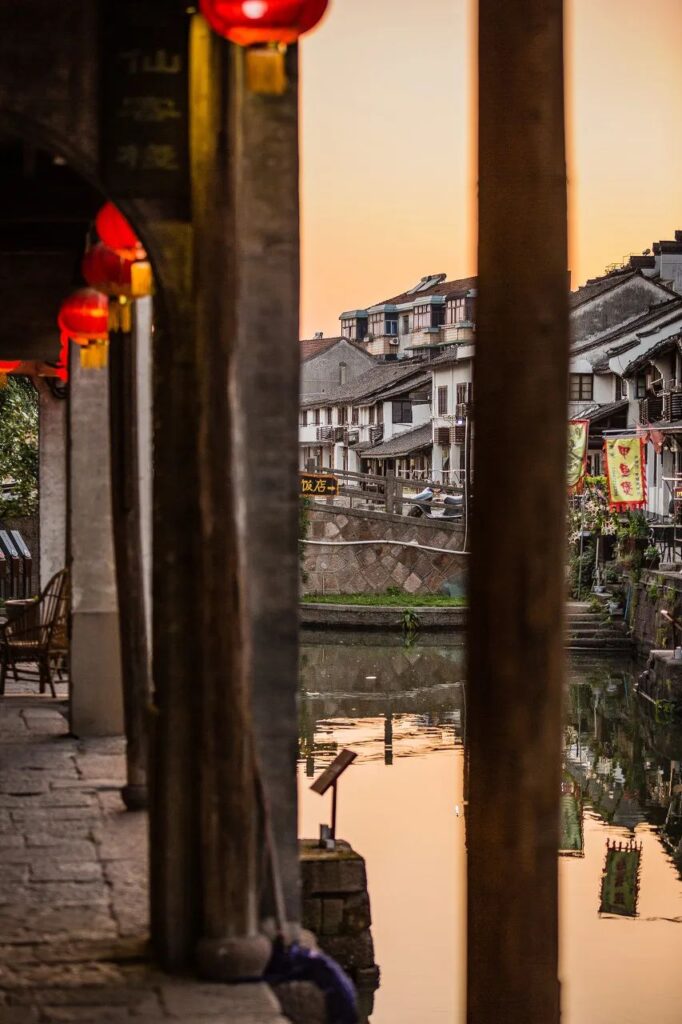
This kind of jianghu lifestyle, filled with delicious food, fine wine, and a sense of ease and comfort, is a true reflection of the life of Huzhou people. They enjoy the gifts of nature, savor the beauty of life, and showcase the unique charm of Huzhou.
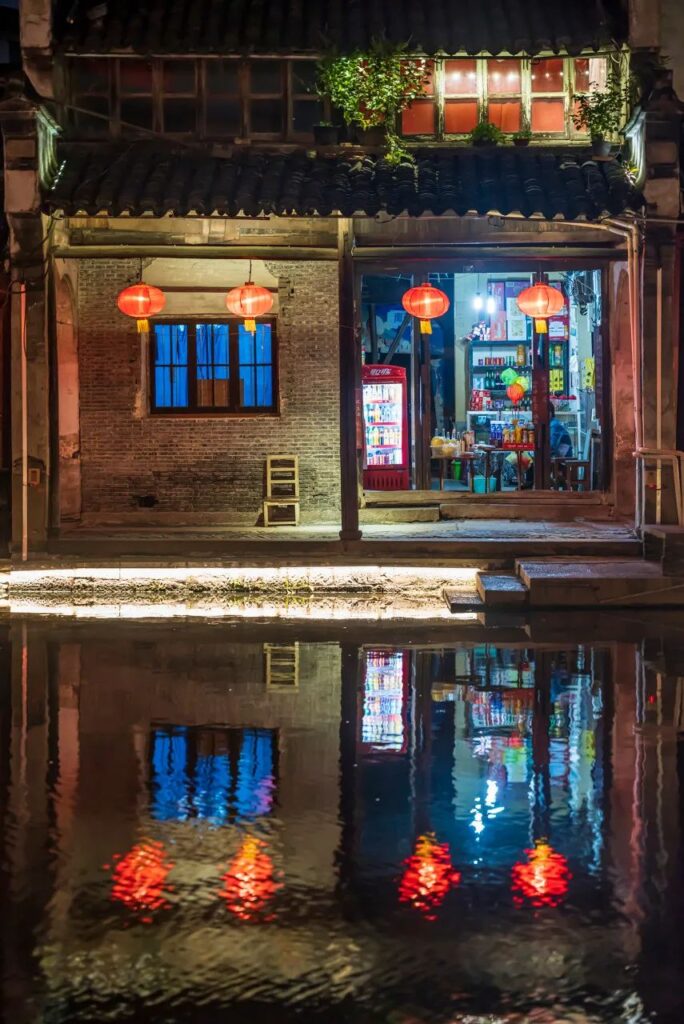
The Ancient Charm of Jiangnan
Among the numerous ancient towns in Jiangnan, Nanxun stands out as the most unique star.
Unlike the gentleness of Wuzhen and the tenderness of Xitang, Nanxun not only carries the charm of Jiangnan but also reveals the robustness and depth of Hui-style architecture in subtle ways.
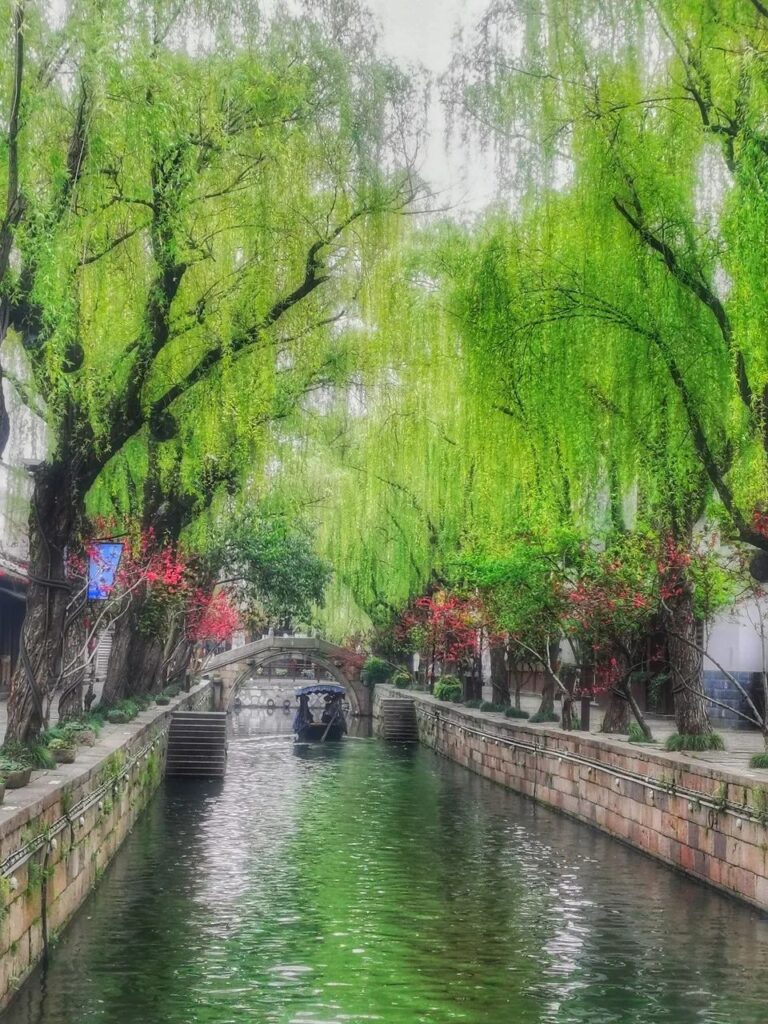
Strolling along the clear river embankment, with willow branches gently swaying on both sides, a small boat leisurely approaches, resembling a scene from a painting, making one feel refreshed and delighted.
Nestled in the embrace of Jiangnan’s water towns, in tune with the rhythm of the wind and the rippling waves, the ancient town softly chants its thousand-year-old stories, recounting its glory and vicissitudes.

Whether gazing out the window from inside a house, looking into the distance from a water pavilion, or wandering along the bluestone paths, the tranquility of the ancient town intertwines with the traces of time, making one feel as if they have traveled through time, back to that pure and innocent era.
Walking along the corridors, although there are few surging crowds, the villagers washing clothes, the elderly on rocking chairs, and the running children compose a vivid scroll painting of Jiangnan’s water towns.
As night falls and the lights come on, the ancient town is gently adorned with glowing halos, permeated with a strong atmosphere of human warmth.
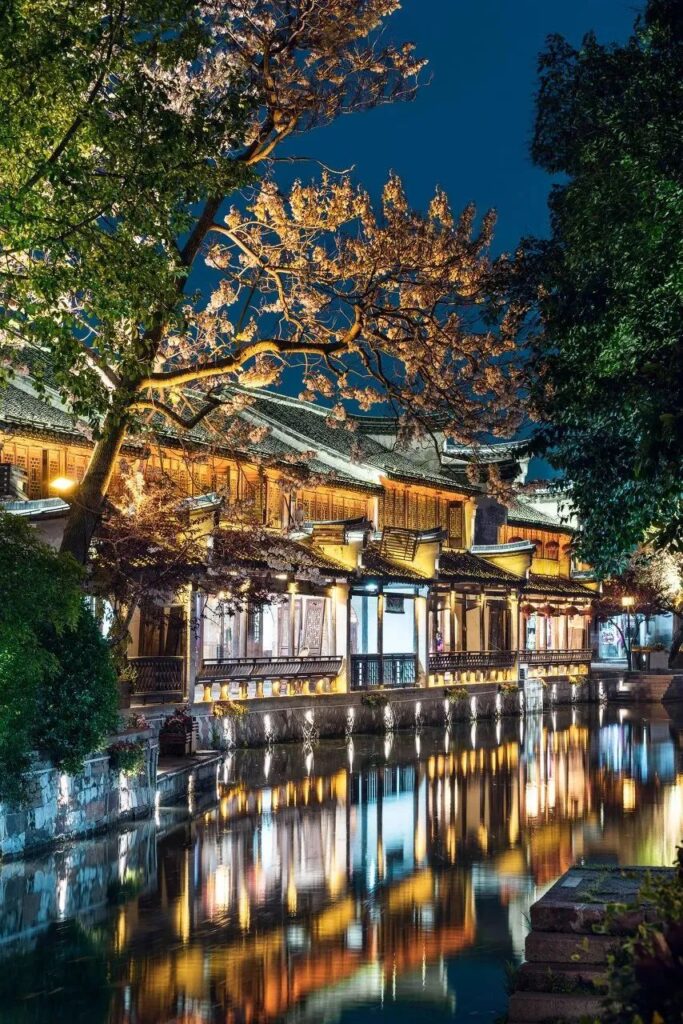
As the saying goes, “Above there is heaven, below there are Suzhou and Hangzhou, and in the center of heaven, there is the fishing village of Digang.”
Digang Ancient Town, like a dazzling pearl, was praised by Mr. Shu Yi as “the best small town in Jiangnan.”
Surrounded by mountains and interwoven with a network of rivers, the small bridges and flowing water form a typical Jiangnan ink painting.

There is no bustling prosperity here, only simple rural sentiments and tranquility. There are no signposts, no tour guides, only the leisurely life of the residents, as if it were a secluded Shangri-La.
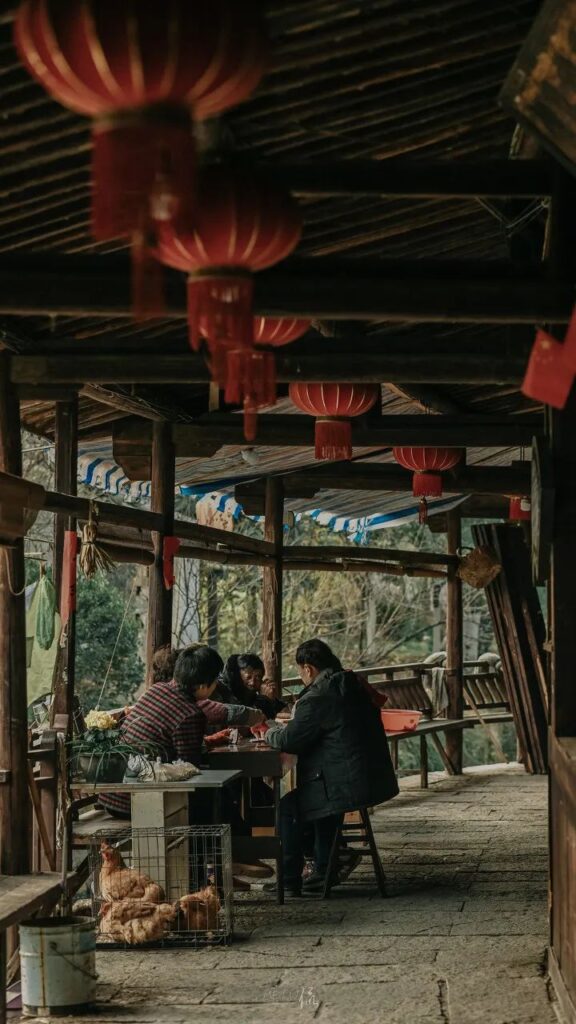
Xinshi Ancient Town was once a gathering place for merchants in Jiangnan and a place highly praised by literati and scholars.
It has earned titles such as “Capital of Silk,” “Land of Fish and Rice,” “Broadway of Jiangnan,” and “Thousand-Year-Old Little Shanghai,” each label telling the story of the ancient town’s glorious history.

The folk houses in the ancient town are built along the river, with residents living by the water. The water, bridges, and wharves blend into one, creating a lively “market scene” of Jiangnan’s water towns.
Although there are not many tourists, the snacks are abundant and varied. You can leisurely stroll along the ancient streets, and when tired, step into a teahouse to enjoy a cup of fragrant tea and the cool breeze by the river.
As night falls, the night scenery of the ancient town takes on a different charm. These seemingly ordinary daily scenes are the best way to immerse oneself in this place.
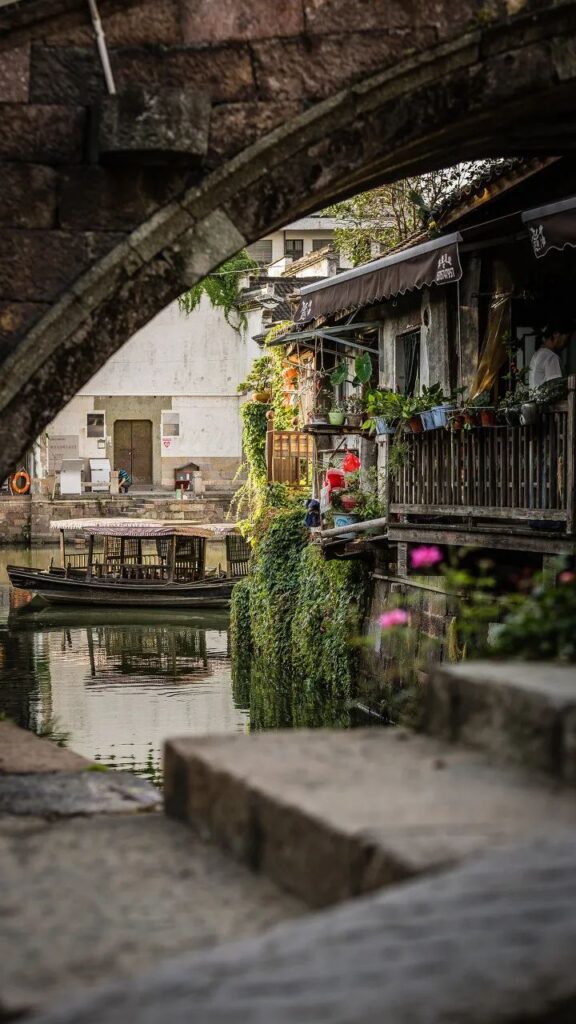
Taihu Ancient Town, although artificially created, exudes a rich ancient town ambiance. White walls and black tiles, horse-head walls, and upturned eaves unfold like scrolls of Jiangnan’s water towns before your eyes.
Especially at night, when various lights illuminate, it becomes prosperous and dazzling, as if transporting people back to the magnificent era of a thousand years ago.
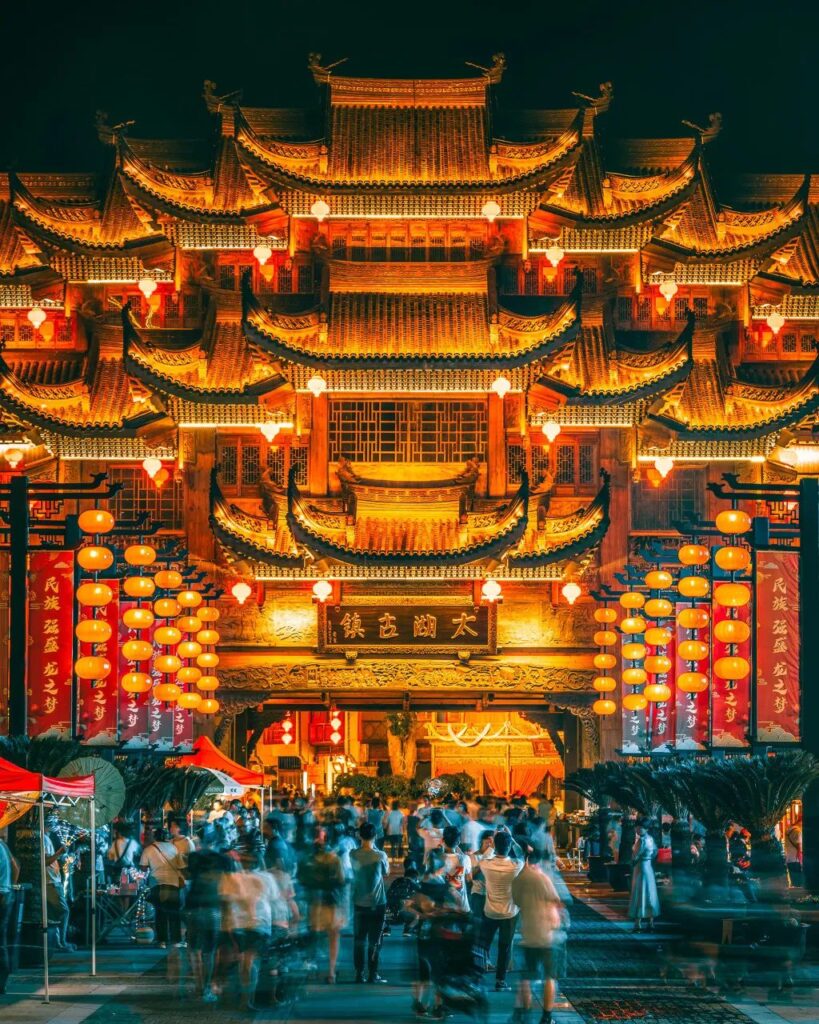
Wandering through the town, you can choose souvenirs that catch your eye, taste various local snacks, and delve into the culture of the ancient town in the intangible cultural heritage exhibition area. From time to time, there are also wonderful performances waiting for you to enjoy.
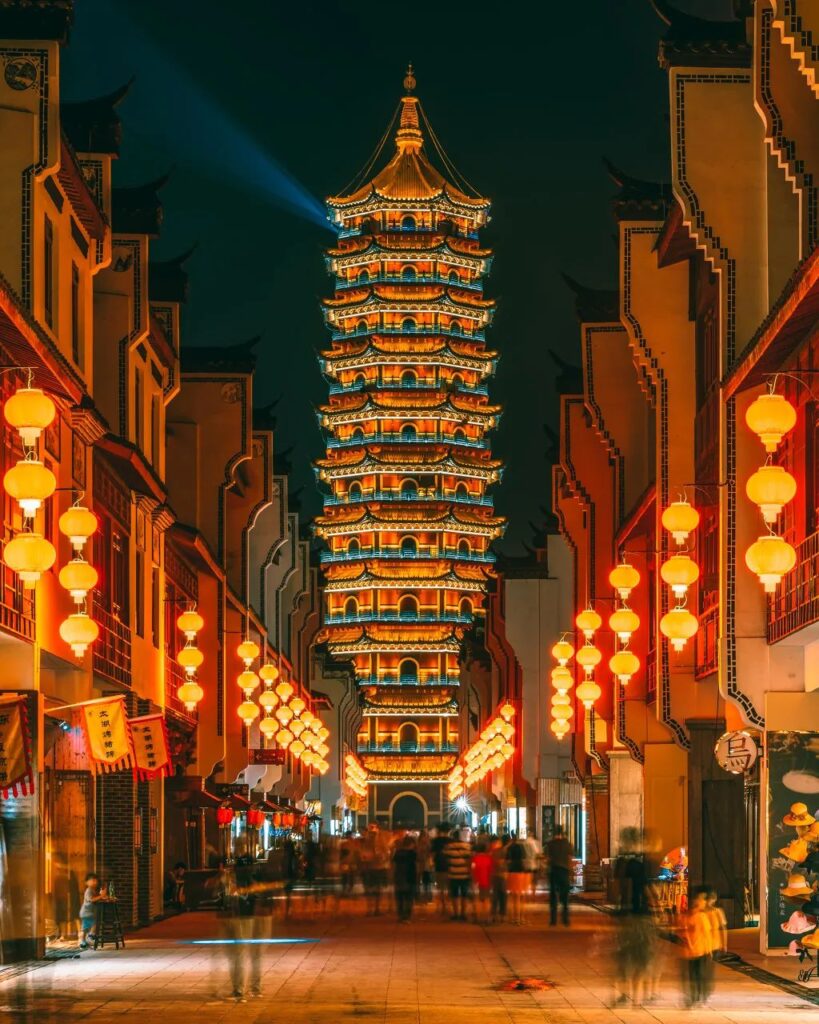
Spirituality Through Water
When we talk about wetlands, China is undoubtedly one of the countries with the most diverse types and abundant quantities of wetlands in the world. However, among these starry wetlands, those that can be honored with the title of “China’s Most Beautiful Wetland” are as rare and precious as the brightest stars in the night sky.
Xiazhu Lake is a dazzling pearl among these stars. It has indisputably won the crown of “China’s Most Beautiful Wetland.”
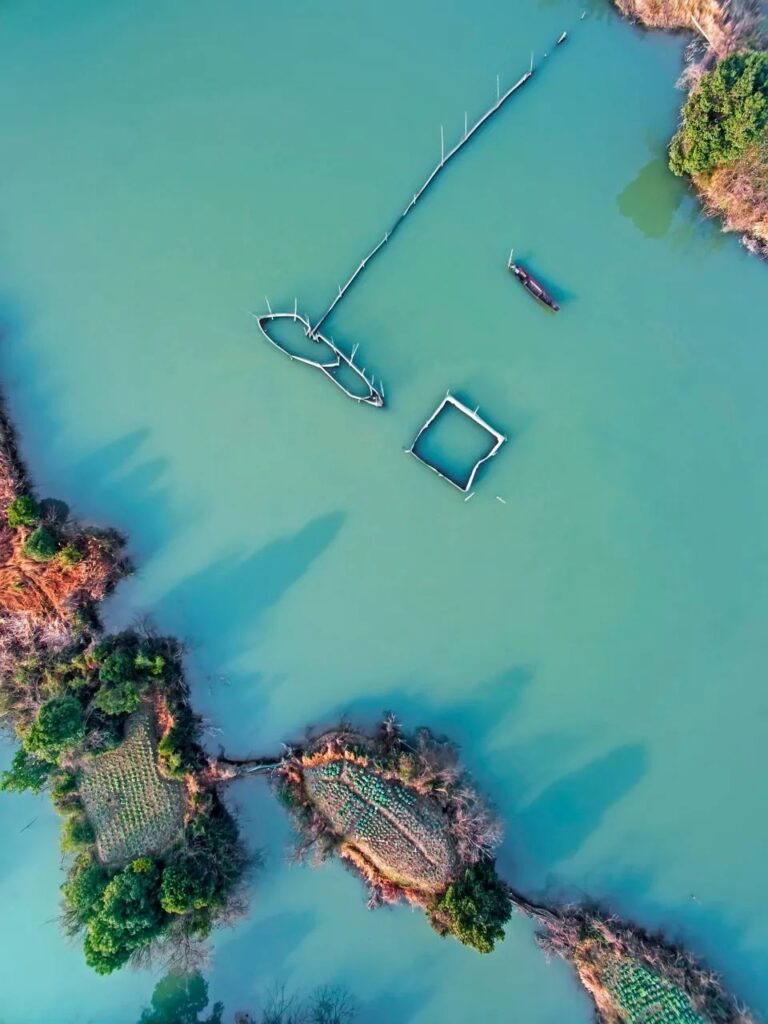
When it comes to Xiazhu Lake, the title of “China’s Best” is well-deserved. In terms of area, it proudly occupies the throne of the largest in Asia and the fourth largest in the world. As for its stunning scenery, it is truly breathtaking. Inside Xiazhu Lake, islands are scattered like stars, and waterways intertwine like a woven fabric. Boating on the lake feels like being in a mysterious water maze woven from aquatic plants, with each step filled with unknown surprises.
What’s even more delightful is that due to its unique natural conditions, this wetland has become a natural paradise for flora and fauna. Birds inhabit and breed here, and wild reeds grow in lush clusters, forming a harmonious and symbiotic wetland ecosystem.

The water of Huzhou not only flows on the surface but also shines brightly in the sky.
Anji Jiangnan Tianchi is an outstanding representative of this “heavenly water.” Driving up the winding mountain road, with bamboo forests stretching endlessly on both sides and occasional streams and waterfalls catching the eye, one feels refreshed and delighted.


Reaching the summit, the view suddenly opens up, and a stunningly beautiful landscape of “unity between man and nature” comes into sight. The majestic power station buildings and the charming natural scenery complement each other. Tianchi is like a dazzling emerald pendant, nestled beneath the clouds.
Standing here, it feels like being at the top of paradise, where one can look up at the blue sky, embrace the white clouds, and even overlook the vast horizon, dancing with the birds and admiring the grandeur of Tianchi.
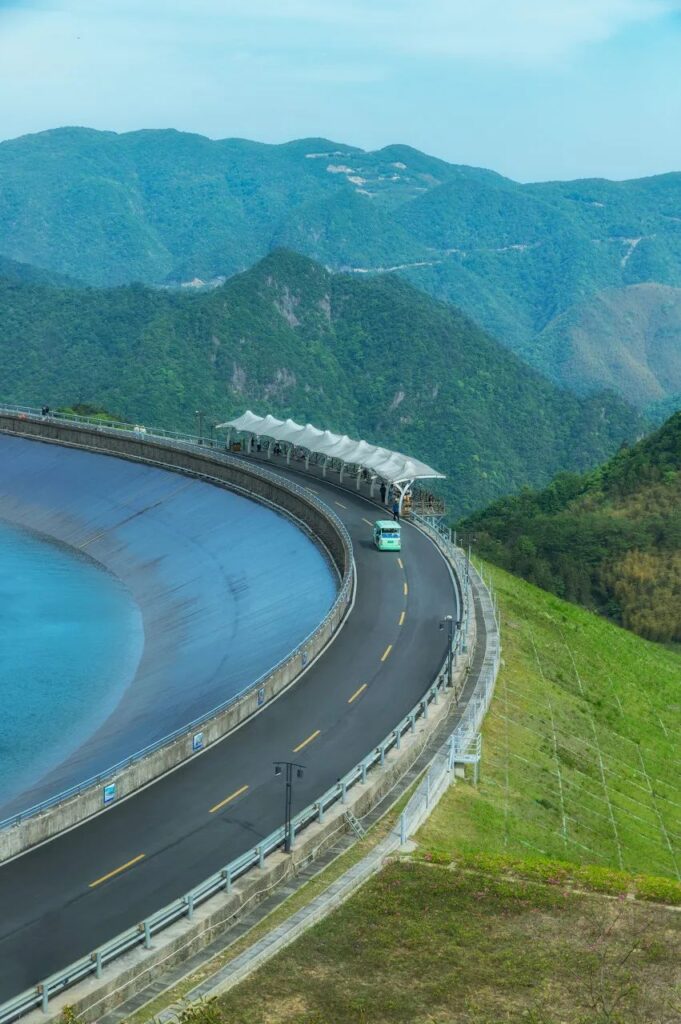
A Sea of Green
Every summer, when the heat is scorching, Moganshan seems to transform into a heavenly paradise, attracting tourists from all over the country who flock to experience this natural summer resort.
Alongside Beidaihe, Lushan, and Jigongshan, Moganshan, with its unique beauty of Jiangnan mountain scenery, ranks among the top four summer resorts in China.
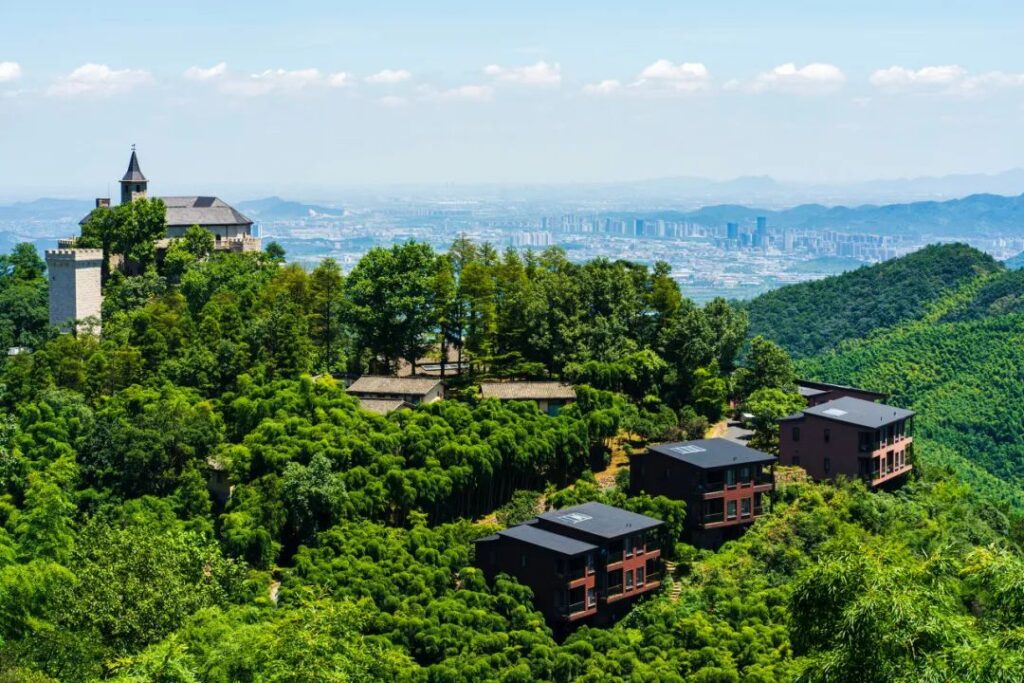

Moganshan is not like the grand mountains and rivers of the north but instead takes the elegance of Jiangnan to the extreme. From a distance, the undulating mountain ranges resemble a huge green velvet carpet, spread out between heaven and earth. The vegetation coverage reaches an astonishing 92%, making one feel as if immersed in a green ocean.
Stepping inside, the greenery greets you, as if being tightly embraced by boundless verdancy. Bamboo forests stretch as far as the eye can see, and the green shade obscures the sun. Clear mountain springs flow incessantly. The modern villas nestled in the forest showcase various styles, converging the architectural essence of countries such as Britain, France, the United States, Germany, Japan, and Russia.
If time permits, be sure to stay here for a few days, waiting for the rising red sun in the mountain valley, quietly observing the rolling clouds in the rain, or enjoying the gentle breeze on the balcony, experiencing the rare tranquility and happiness.
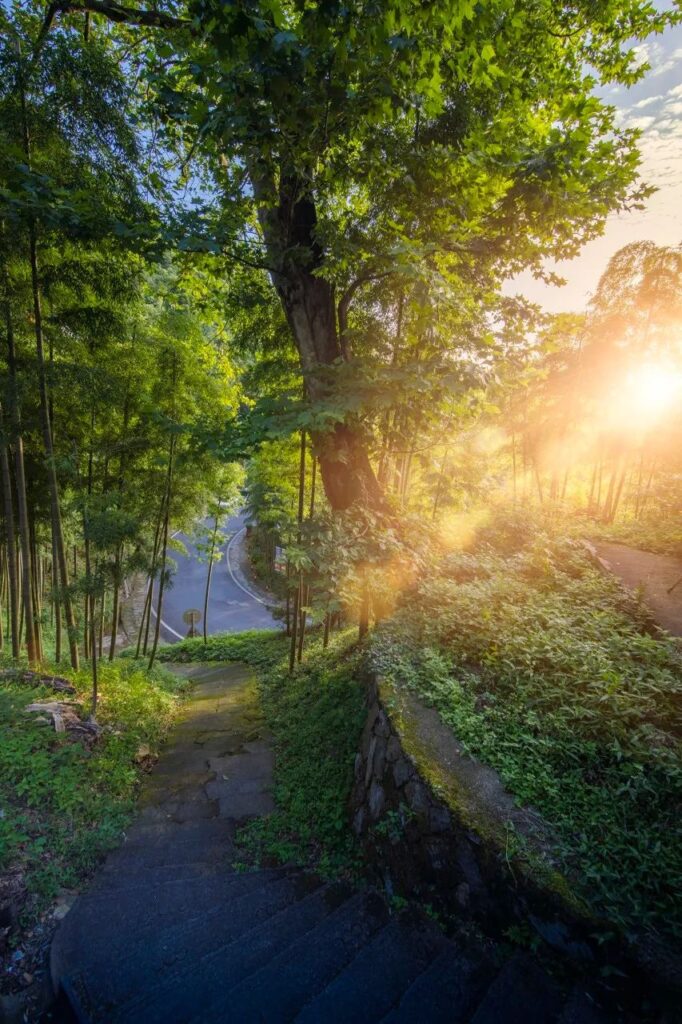
In China, there is a saying: “For Chinese moso bamboo, look to Zhejiang; for Zhejiang moso bamboo, look to Anji.”
Anji Dazhuhai is a green paradise themed around moso bamboo. The scenic area covers a vast area of approximately 10,000 mu and serves as a scientific research base for giant moso bamboo from 17 countries in Asia, Africa, and Latin America.
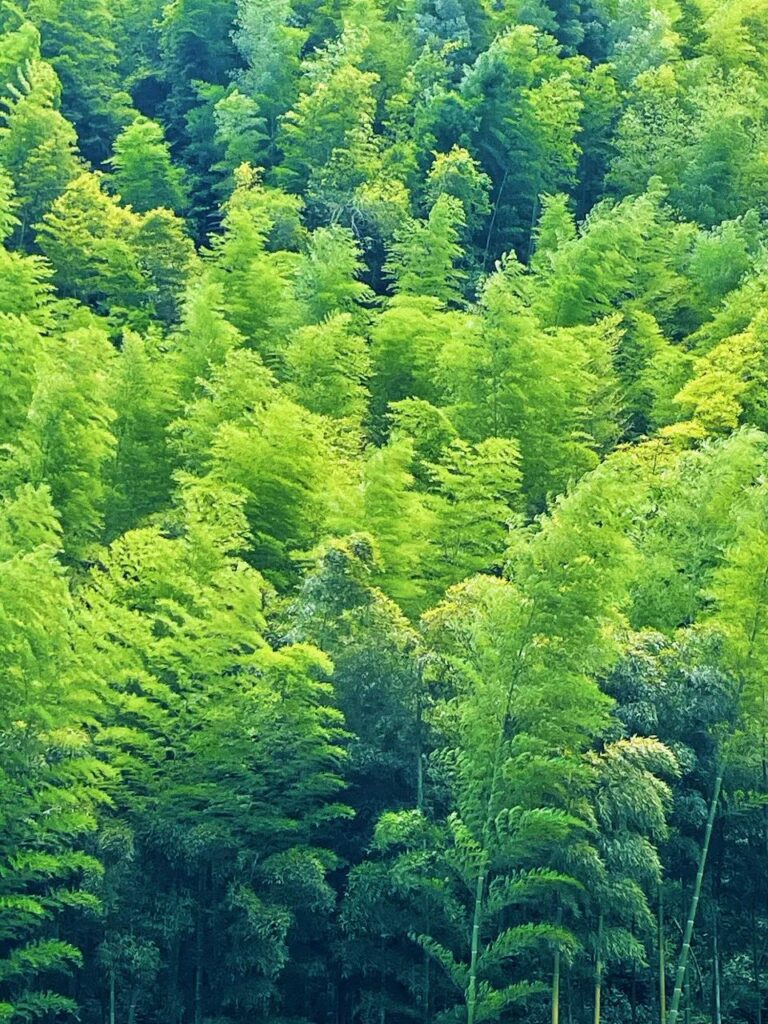
Here, as far as the eye can see, there are enchanting mountains, and one can immerse oneself in the pastoral songs of the fields, surrounded by a vast sea of bamboo, with the gentle singing of gurgling streams in the ears. Mountains connect with mountains, and bamboo joins with bamboo, forming a layered and overlapping scroll of green bamboo paintings.
Entering the bamboo sea, the shade of the forest obscures the sun, creating a tranquil and remote atmosphere. Even when it rains, there is no need to worry, as the tall bamboo forest acts as a natural corridor, providing shelter from the wind and rain. Climbing to the top of the mountain, a gentle breeze arrives, and the sound of bamboo waves resonates, as if nature is playing a heavenly melody, making one feel intoxicated and experiencing the dual sensory impact of sight and sound.
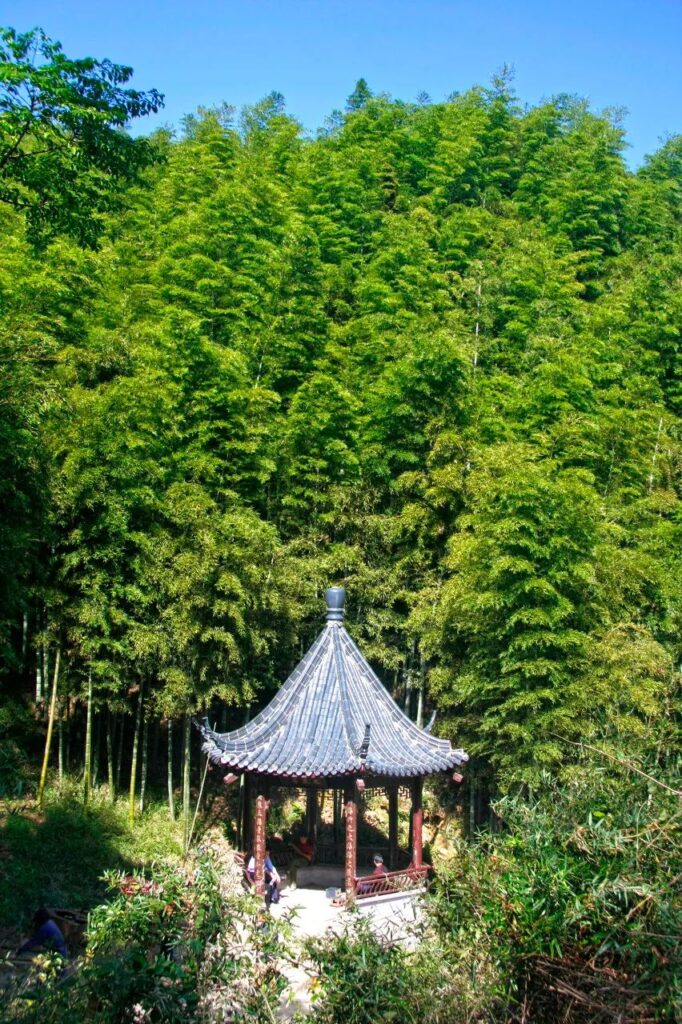
Zhebei Grand Canyon is a treasure that combines historical culture, natural scenery, and humanistic landscapes.
The historical heritage of Buddhist and Confucian culture permeates throughout the scenic area, with Zen and Confucianism blending in the mountains and waters, and humans living in harmony with nature.
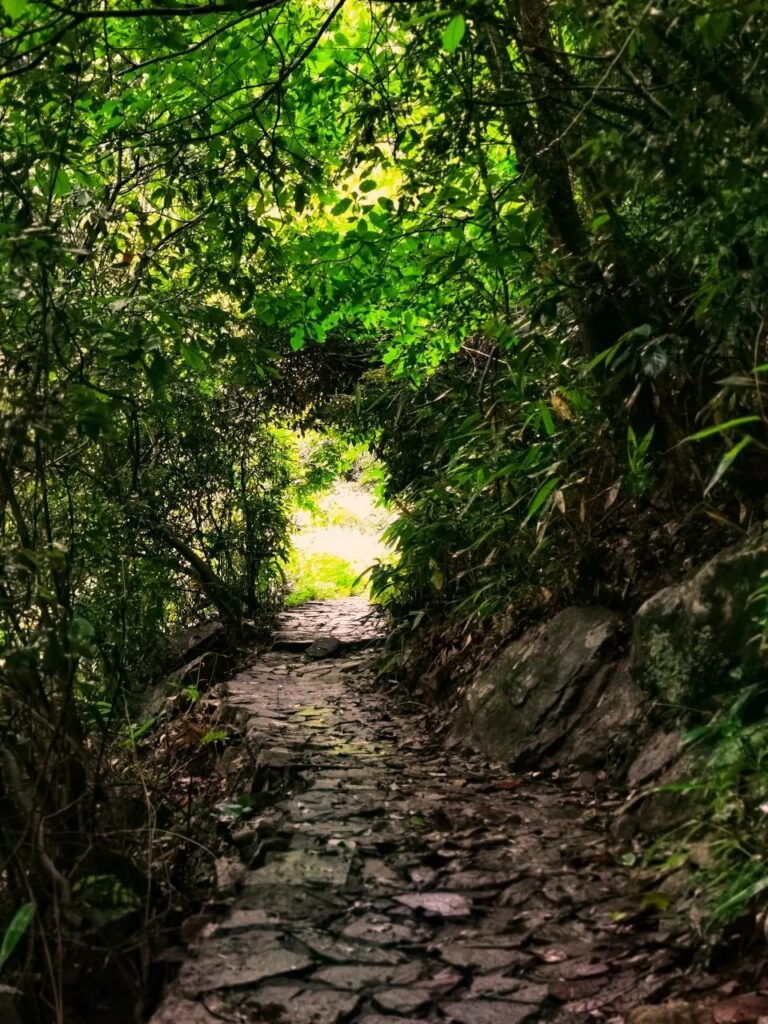
Here, you can embrace challenges and excitement while also appreciating the beautiful natural scenery.
After exploring, take a stroll in the canyon, rest by the waterfall, and feel the wonder and beauty of nature. The stream in the mountains flows gently, accompanying your footsteps, as if entering a secluded and lush fairyland.
Eternal Incense
Tiefo Temple stands quietly amidst the bustling city of Huzhou, hiding a world-class secret behind its name. Inside the temple stands a Song Dynasty iron-cast Guanyin statue, which has been praised as the most beautiful work of art in the world. This Guanyin statue endows Tiefo Temple with a unique soul.
Although Tiefo Temple is not well-known on ordinary days, whenever the plum blossoms are in full bloom, it attracts countless fragrance seekers to come and pay homage, like a hermit sage.
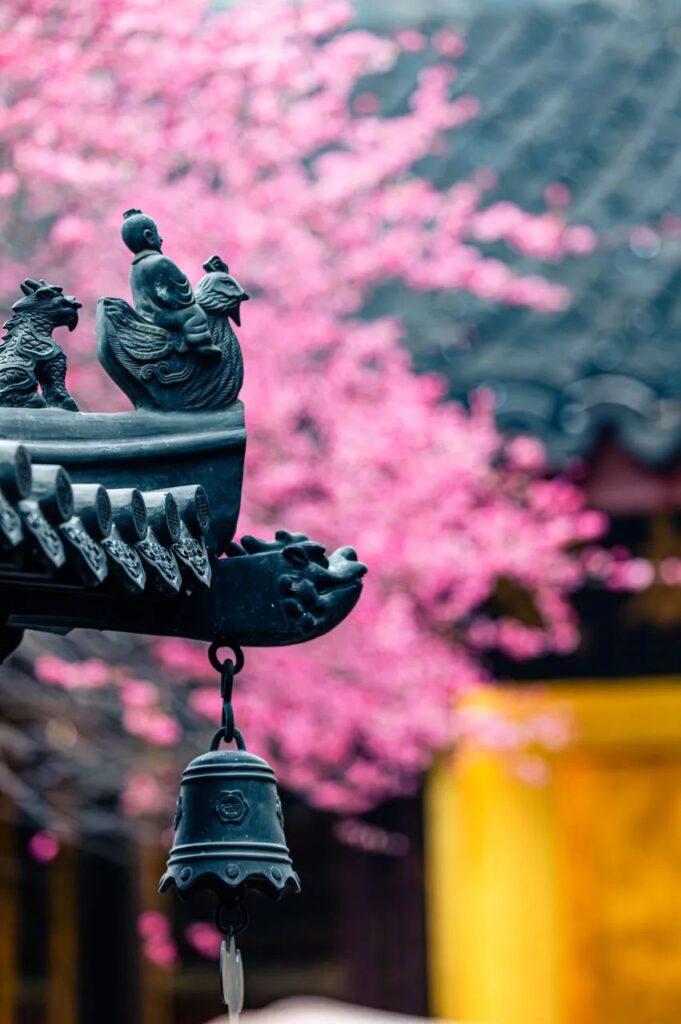
At that time, the pink flower branches, yellow walls, exquisite lattice windows, and swaying wind chimes interweave with light and shadow, forming a series of Zen-filled paintings. The fragrance of plum blossoms and the temple’s architecture and scenery complement each other, gently lingering in the hearts of every visitor.
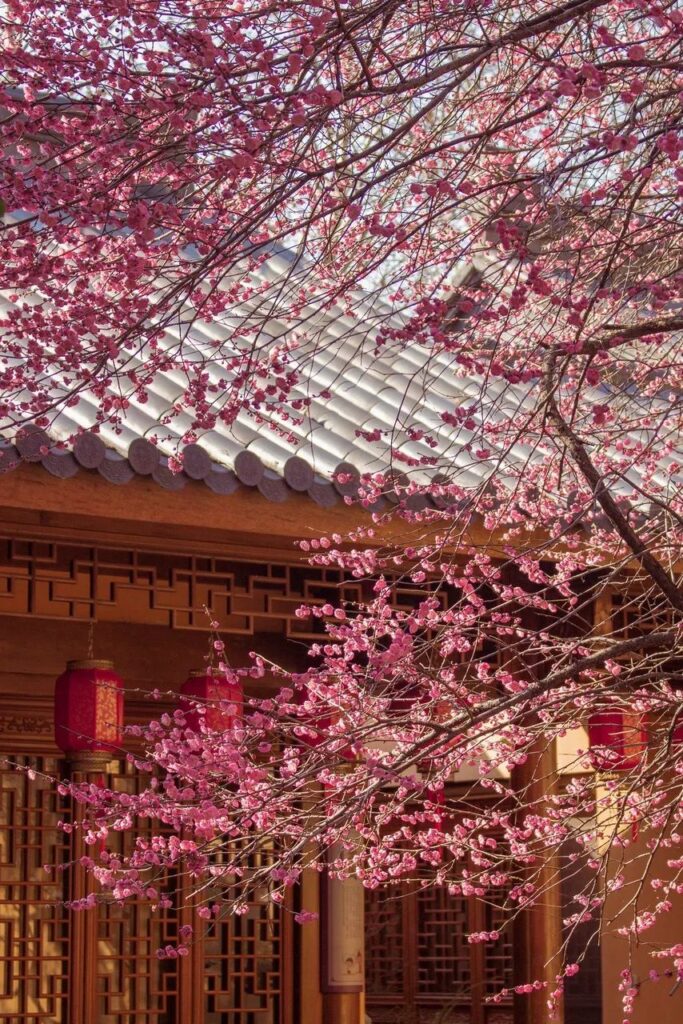
Wanshou Zen Temple, on the other hand, is like a wise man contemplating in the mountains. It is built along the mountainside, layered and staggered, seemingly a perfect fusion of nature and human wisdom.
Inside the main hall, incense burns prosperously, and the Buddha statues are solemn and majestic. The air is filled with a faint scent of incense, and each wisp of smoke seems to be telling a long history.
Entering Wanshou Zen Temple is like stepping into a tranquil and peaceful world, allowing one’s soul to be cleansed and uplifted.
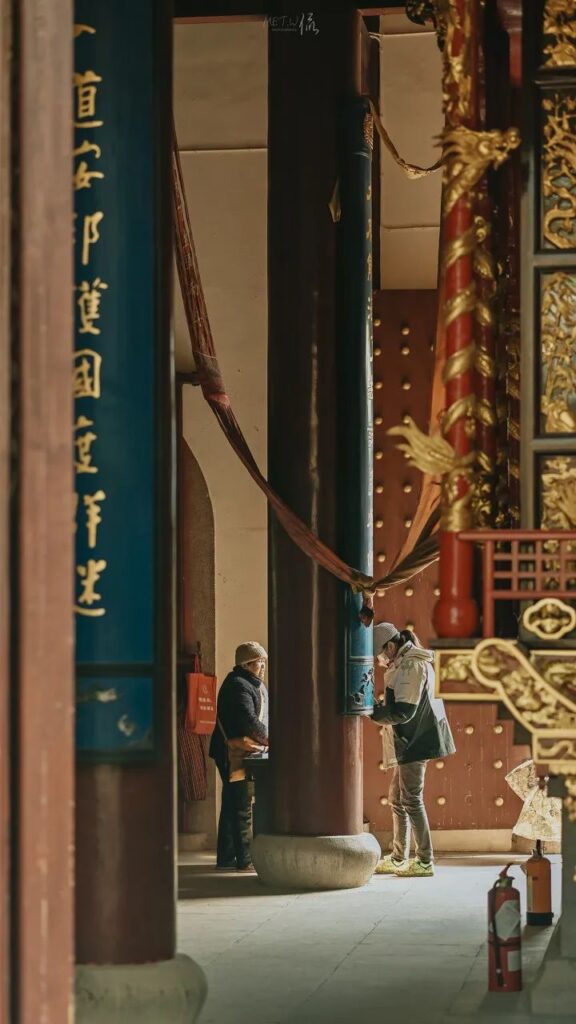
Huzhou, this ancient and beautiful city, carries a rich cultural heritage and endless poetic charm.
It can be said that half of the history of Chinese painting and calligraphy is in Huzhou. Whether it is the profound cultural heritage or the unique poetic charm, it allows Huzhou to stand out among many cities and hold its head high.
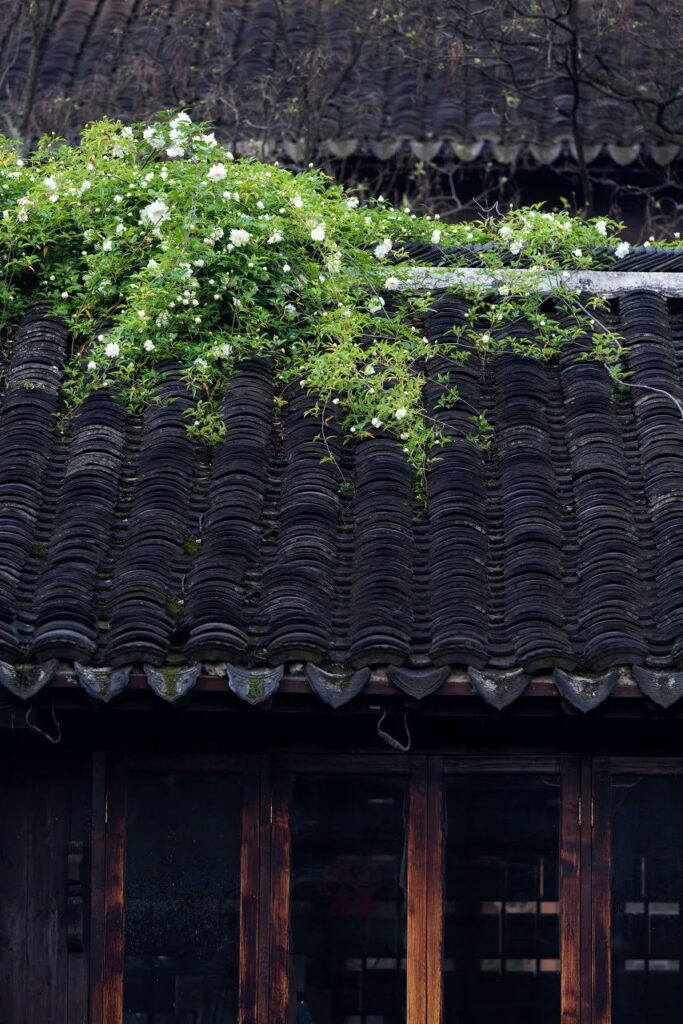
Moreover, in the rankings of cities with wealth and leisure, Huzhou surpasses many first-tier cities with its unique charm.
All of this is not accidental but stems from Huzhou’s rare down-to-earth atmosphere.
This down-to-earth atmosphere encompasses both the prosperity and hustle and bustle of the city, as well as the tranquility and serenity of the countryside; it has both the depth and profoundness of history, as well as the vitality and innovation of modern times. It is precisely this down-to-earth atmosphere that makes Huzhou a place where people linger and are reluctant to leave.
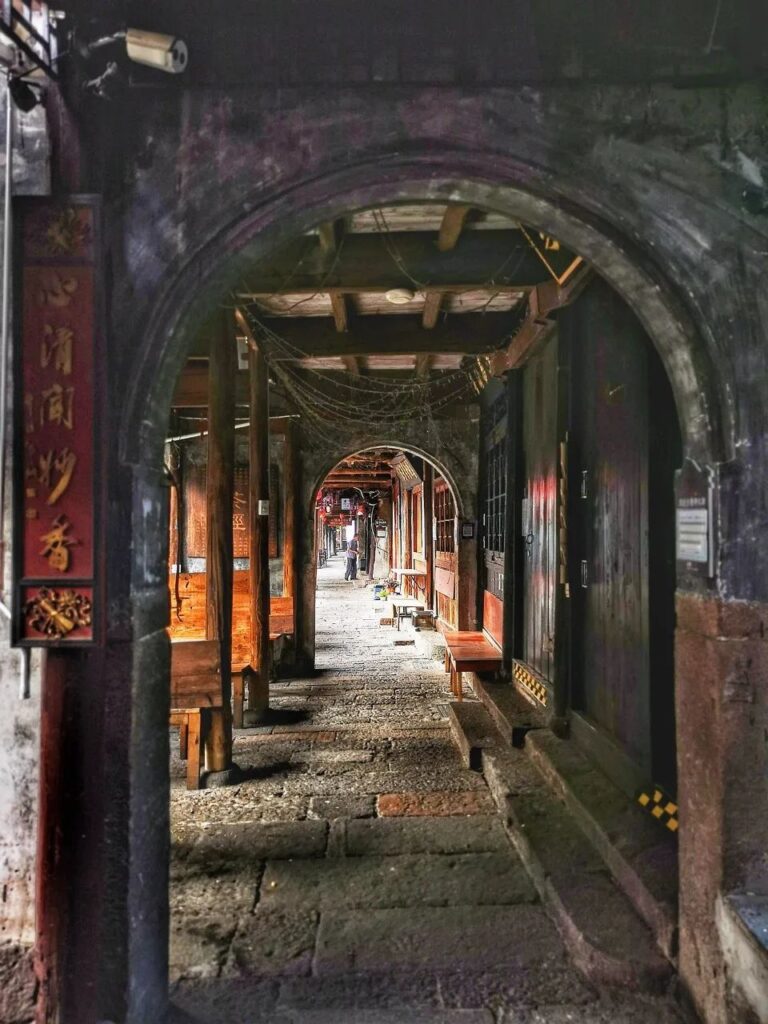
Related Articles:





